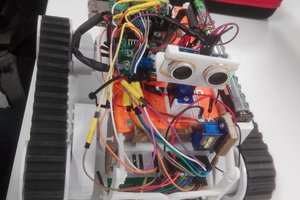Been a while since I posted here, but being home a few days with a not so serious cold does wonders for maintenance around the house.
So the time had come to assemble the ebike kit. Since I already had an older working set I decided I would evaluate this kit before switching over.
As some of you ebike freaks may know, legal requirements in most of Europe requires you to have a so called pedelec sensor which only allows the motor to run when the bike is being pedaled, thus amplifying the force provided by the legs.
Weirdly enough this is not the case for those pesky rentable electric scooters. Would it suffice if I removed my pedals? What is the original idea here? That dead people are not allowed to cruise on electrical vehicles unless they are mopeds? How often do people actually die on bikes provided they don’t have a proper accident? Is all this an EU conspiracy to protect the inner market? Oh well.
Anyway this kit came with a wheel that I nicely replaced the old one with, nothing a clumsy idiot couldn’t handle with a fat adjustable wrench . The household pluming one went admirably. The nuts where upgraded from 18mm to 20mm and my fixed wrench set went up to 19 only.
After some messing around with the wiring, this kit was actually quite Poka-Joke no connectors would fit in the wrong place. So with the handlebar installed I could make a few turns back and forth in the garden and now came the time for … The Pedelec!
Ok, I know some bike freaks probably stop every two miles or so to change their pedals for less air friction with respect to terrain or so, but growing up in the 70s they where somewhat like the axis of the earth, not to be removed. On the other hand they where made to last forever, I finally managed to break a pedal on one of those 40+ yo contraptions and out of curiosity got a vintage spare and managed to get it on for another 40 years of enjoyment, but the obviously inferior construction of the cheap pedelec I got with the kit made me wonder how long till the next pedal arm pull since I would obviously wreck that little plastic ring of magnets quite easily just by kicking around some.
To add to this heap of trouble there seems to be a few different pedal solutions. The simplest one would be where you’d remove the pedal arm and then lock this little metal ring glass jar lid style.
Mine however was not of that type so the ring for the sensor could not be screwed on just like that.
Youtube, however was not lacking for solutions:
“And then you take a plastic cup from some hair product on your moms bathroom shelf and use some rubbing alcohol leftover from covid, sandpaper and a clamp plus metal epoxy, oh and you’d have to remove the pedal stuff on the gear side as well, glue takes 24 hours to set…”
or:
“First you take two hose clamps and wrap the sensor like this and bla bla then you can either buy this dividable magnet ring or use a hack saw and some more glue to glue it on and more bla bla”
Seeing as this kind of bicycle gear is the type that breaks all the time but what the heck you just smack on a new 10 euro thingy in 10 minutes this seems like a little to much trouble to go through every time crap brakes, turning me into a glue head in no time.
Some fast googling also confirmed this, the net was full of broken ebike dreams and broken pedelecs complete with “my mom with disabilities” sob stories.
My mind went wandering as I though, “In this day of sensors, glory and bluetooth, would it not be possible to make a wireless sensor that neither weights a ton nor costs a ton of money?”
So this is where the hack began, first I wanted to evaluate the signal coming out of the sensor. Meet the drill contraption. Sensor was screwed to some wood and then the hex to half-inch adapter would fit perfectly into the plastic magnet ring, just some more wood to hold the drill down and since it had reverse I would not have to worry about ...
Read more » junkotron
junkotron
 Alan Chambers
Alan Chambers
 CaptMcAllister
CaptMcAllister
 Hugh Brown (Saint Aardvark the Carpeted)
Hugh Brown (Saint Aardvark the Carpeted)
 Alex Hunt
Alex Hunt